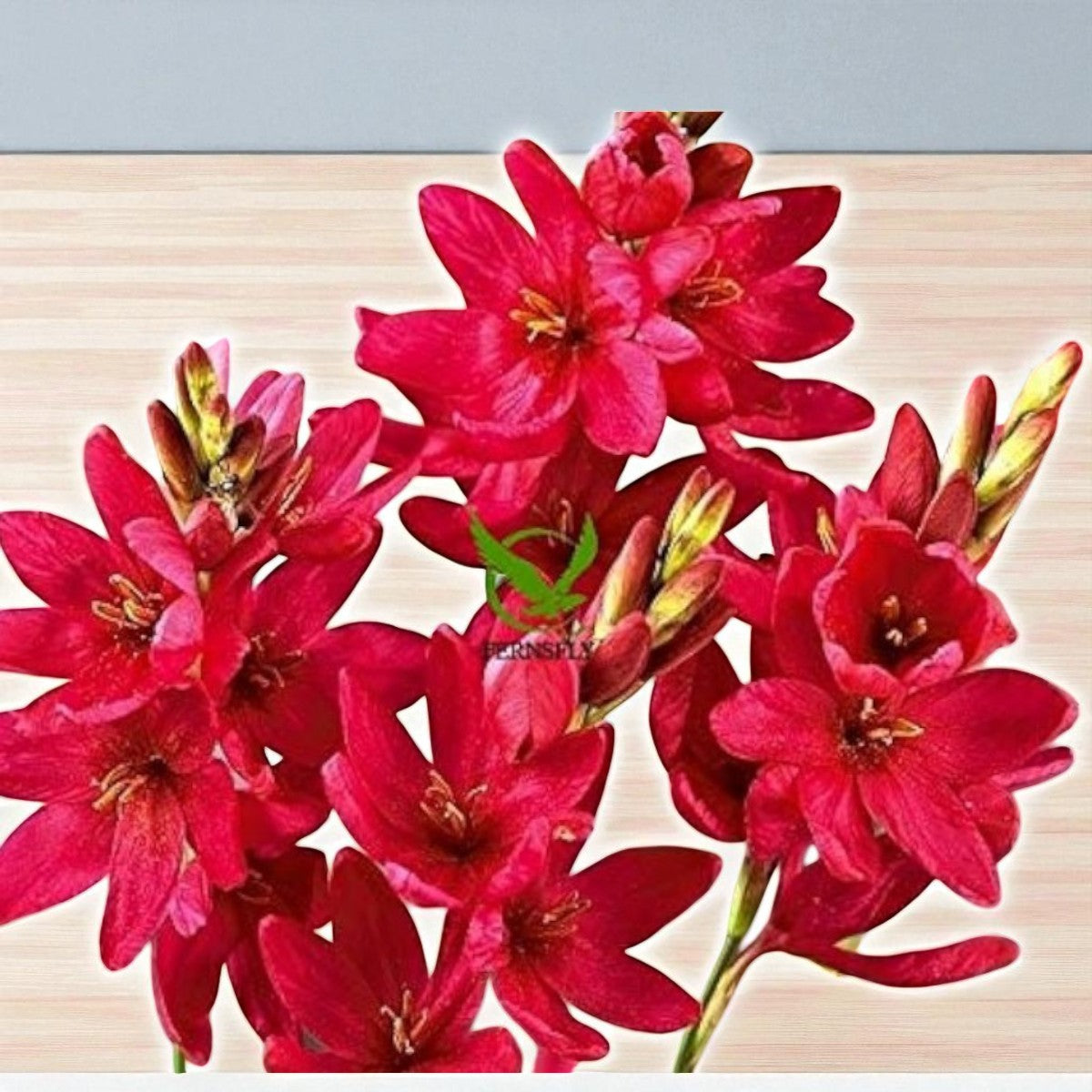
Air Purifying Plants Explained: How They Clean the Air Naturally
We all love the look of plants in our homes, but did you know they do a lot more than just look pretty? Inside many Indian homes, the air is often more polluted than the air outside. This can happen because of dust, cooking smoke, chemical fumes from new furniture, floor polish, or even the paint on the walls. When we keep windows closed to avoid outside noise or heat, that stale, polluted air just stays trapped inside. This is why we need simple, natural solutions to clean our indoor air.
What are air purifying plants? Simply put, they are common houseplants that have a special natural ability to pull harmful chemicals and tiny dust particles out of the air we breathe. They act like a slow, quiet, natural air filter. They take in the bad stuff we don't want and give us clean, fresh air.
These natural air cleaners are quickly becoming popular in Indian households, especially in big, busy cities. People are realizing that a beautiful plant doesn't just add style; it adds real health benefits. Keeping these plants helps your family breathe easier, feel less stressed, and enjoy a healthier indoor space.
How Do Plants Clean the Air Naturally?
The idea that plants clean the air isn't just a rumor; it’s a natural process that happens all the time. How do plants act as air purifiers? They do it in two main ways that work together perfectly.
First, you already know plants absorb carbon dioxide and release oxygen during the day through a process called photosynthesis. This alone makes the air better for us to breathe.
Second, and this is the important part for cleaning the air of toxins, plants absorb airborne chemicals through tiny pores in their leaves. When chemicals like formaldehyde (found in carpets, plywood, and furniture polish), benzene (in plastics and pesticides), and xylene (in paints and glues) float around your home, the plant's leaves pull them in. Once inside the plant, these toxins travel down to the roots.
Here’s the neat trick: the soil around the plant is full of tiny, helpful microbes (like good bacteria). When the harmful chemicals reach the roots and the soil, these soil microbes actually eat the toxins and break them down into harmless nutrients for the plant. It's a natural, tiny recycling system happening right in your flowerpot!
The world really started paying attention to the cleaning power of air purifying plants back in the late 1980s when NASA (the US space agency) did a famous study. They were looking for ways to clean the air in space stations. Their Clean Air Study proved that common houseplants could effectively remove specific harmful chemicals from a sealed environment. This study was a major moment because it told everyone that our humble houseplants could be powerful tools for a healthier home.
Benefits of Air Purifying Indoor Plants
To Keep air purifying indoor plants in your home is a simple choice that brings real, noticeable changes to your home.
One of the biggest benefits is that they improve the actual air quality. By constantly absorbing toxins and releasing oxygen, they reduce the number of pollutants floating around. This is a great help for people who suffer from minor allergies or asthma, as cleaner air often means fewer triggers.
In the bedroom, plants like the Snake Plant can help you get better sleep. Cleaner air means less tossing and turning because your body isn’t working as hard to process poor quality air. Studies also show that having plants nearby can reduce stress and anxiety, by creating a calmer, more peaceful feeling in the house.
For those living in heavily polluted cities like Delhi, Mumbai, or Bangalore, these plants act as a great natural defense layer. While they can't handle extreme smog on their own, they significantly reduce the concentrated pollution trapped inside your four walls. Another hidden benefit is that plants naturally release moisture into the air through a process called transpiration. This slightly increases humidity, which makes the indoor air feel less dry and more comfortable, especially during the dry winter months in parts of India.
Which Plant Purifies the Air the Most?
If you want to know which plant purifies the air the most, you have a few winners based on the original NASA study and updated research. The Snake Plant and the Peace Lily often score highest in efficiency.
Why are these plants so effective? It’s not just about one plant being "magical." It's about a combination of factors:
- Leaf Surface Area: Plants with large or numerous leaves, like the Areca Palm, have more surface area to trap dust and absorb toxins.
- Metabolic Activity: Some plants, like the Peace Lily, have a higher rate of breaking down chemicals once they are absorbed into the plant's system.
- Toxin Absorption Rate: The Snake Plant is superior because it continues to function and absorb chemicals even when it's dark. Most plants only perform photosynthesis (and air cleaning) when light is present, but the Snake Plant uses a special metabolic process (CAM) that allows it to keep working 24/7. This makes it ideal for the bedroom.
While the Snake Plant and Peace Lily are often cited as the most powerful, the truth is, a mix of several different plants will give you the best overall air cleaning power. Each type of plant is better at removing certain toxins, so variety is key to cleaning your home air of all common pollutants.
Simple Tips to Care for Air Purifying Plants
You don't need a green thumb to keep your air purifying plants happy in your Indian home. A few simple steps will keep them working hard to clean your air.
1. Know Your Light Needs: Most indoor plants, especially those popular in India, need indirect sunlight. This means bright light coming through a window, but the sun's rays shouldn't hit the leaves directly all day, which can burn them. Low-light tolerant plants like the Snake Plant or ZZ Plant can handle a dimmer corner, but they still need some light to survive and clean the air.
2. Water Smart, Not Often: The number one reason indoor plants die is overwatering. It causes root rot. Always check the soil first. Stick your finger two inches deep into the soil. If it feels dry, then water it until water runs out the bottom of the pot. For plants like the Snake Plant, watering once every 2-4 weeks is often enough, especially in winter.
3. Keep the Leaves Clean: Air purifying plants use their leaves to absorb toxins. If the leaves are covered in a thick layer of dust (common in Indian cities), the pores get blocked. Gently wipe the leaves with a damp cloth every 1-2 weeks. This simple task lets the plant breathe and clean the air better.
4. Feed Them Occasionally: Your plants need food to stay healthy and keep cleaning the air. During the main growing seasons (spring and monsoon/summer), give them a small dose of fertilizer once every 1 to 2 months. Use an organic liquid fertilizer, which is gentle and easy to find in most nurseries across India.
Can Air Purifying Plants Replace Air Purifiers?
This is a question many people ask. In reality, no, plants alone cannot replace an electric air purifier machine in very high-pollution areas, like a home right next to a busy highway in a major Indian city.
Electric purifiers use HEPA filters to rapidly remove tiny particulate matter (PM2.5, PM10) from the air. Plants work much slower, focusing more on chemical vapors (VOCs) and carbon dioxide.
However, plants do an excellent job of complementing the machine. They work silently, constantly, and naturally. They reduce CO₂, add fresh oxygen, put natural moisture back into the air, and slowly break down chemical fumes that filters sometimes miss. The best strategy for a truly healthy Indian home is to use both: a quality air purifier machine and several air purifying plants placed throughout the house for continuous, natural air refreshment.
Final Thoughts
Making your home a healthier place doesn't have to be complicated or expensive. Air purifying plants offer a simple, beautiful, and completely natural way to improve the quality of the air you breathe every day. By understanding how do plants act as air purifiers and choosing the right varieties that thrive in the Indian climate, you’re making a great decision for your health and your home. Start small—get yourself two or three easy plants like the Snake Plant or Money Plant. You'll quickly see and feel the difference they make.

